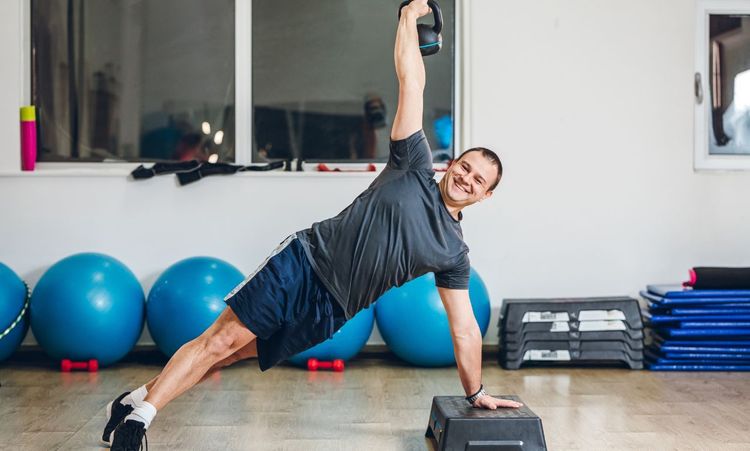A pulled back muscle can stop you in your tracks. One wrong twist or heavy lift, and suddenly every move hurts. Whether it happens at work, in the gym, or during chores, the pain can be overwhelming. But here’s the good news — most mild to moderate pulled muscles heal at home with proper care.
Understanding what’s going on in your back is the first step to recovery. Knowing what causes the pain, how to treat it, and when to rest helps you heal faster. This article explores 6 treatments for pulled back muscles that you can do at home. Each method is simple, practical, and supported by experts.
Let’s start with how to recognize the signs.
Pain and Other Signs and Symptoms of Pulled Back Muscles
When a back muscle is pulled, tiny fibers tear within the tissue. The body reacts instantly, triggering pain and stiffness. The discomfort might range from a mild ache to sharp, stabbing pain.
You might notice tightness that makes bending or standing difficult. Swelling or spasms are also common. Some people even feel a sudden “pop” during the injury. The affected area can become sore to touch or feel warm.
Sometimes, pain spreads to nearby areas like the hips or shoulders. If you’ve ever tried to reach for something on a high shelf after a strain, you know that familiar jolt of discomfort. These are your muscles reminding you to slow down.
Back Sprain vs. Back Strain
It’s easy to mix up a back sprain with a back strain, but they’re not the same thing. A back sprain affects the ligaments — the tough bands that connect bones. A back strain, however, affects the muscles or tendons.
Both can cause similar symptoms, including stiffness and swelling. However, a strain usually results from overuse or sudden movement. Lifting something too heavy or twisting awkwardly can cause it. A sprain often happens when ligaments stretch beyond their limit.
Understanding the difference helps with treatment. Strains usually respond better to rest and home care. Sprains might require more time and sometimes medical support. Either way, listening to your body is key.
What Causes a Pulled Back Muscle
Many things can lead to a pulled back muscle. Overexertion is one of the biggest culprits. A long day of moving boxes or shoveling snow can take its toll. Poor posture adds to the risk. Sitting hunched over your desk or phone puts extra pressure on your spine.
Sports injuries are another common cause. Athletes who twist or jump suddenly often strain their back muscles. Even coughing hard or sneezing awkwardly can cause a minor pull.
Age plays a role too. As we grow older, our muscles lose flexibility. That makes them easier to injure. Skipping warm-ups before physical activity also increases your chances of strain.
In short, back muscles can rebel when pushed too far — often at the worst moment.
How Long Does It Take for a Pulled Back Muscle to Heal?
Recovery depends on the severity of the strain. Mild cases often improve in a few days. Moderate strains may take two to four weeks. Severe cases, involving deep tissue damage, might need several months.
Healing time also depends on your lifestyle. Resting helps, but too much inactivity can slow recovery. Gentle movement, combined with proper care, encourages blood flow and healing.
If the pain lasts longer than expected or becomes worse, it’s time to consult a doctor. Persistent pain may signal a more serious condition. Patience is essential, but progress should always be noticeable week by week.
Home Treatments Can Help Ease the Pain of a Pulled Back Muscle
When your back hurts, your first instinct is often to lie down and stay still. That’s partly right — but only for a short while. There are simple home remedies that can help relieve discomfort and promote healing.
Here are six effective treatments for pulled back muscles that you can do at home. They’re safe, affordable, and can make a big difference.
Rest
Rest is your body’s natural healing tool. It gives torn fibers time to repair. However, resting doesn’t mean spending all day in bed. Too much inactivity can cause muscles to tighten even more.
Try gentle movements throughout the day. Short walks around your home or light stretching can prevent stiffness. Use supportive furniture when sitting or lying down. A medium-firm mattress or a cushioned chair can reduce pressure on your back.
Listen to your body. If pain increases, stop and rest again. But avoid staying in one position for hours. Balance is key — rest enough to heal but move enough to prevent stiffness.
Heat Therapy
After the first 48 hours, heat therapy works wonders for a pulled muscle. Applying warmth increases blood flow and relaxes tight tissues. It also helps reduce stiffness, making movement easier.
You can use a heating pad, a warm towel, or take a hot shower. Some people prefer a warm bath with Epsom salt for added relief. The heat soothes soreness and speeds up recovery by delivering oxygen-rich blood to the area.
Just remember not to sleep with a heating pad on. Prolonged exposure may irritate the skin. Aim for 15 to 20 minutes per session, two or three times a day.
Nonsteroidal Anti-Inflammatory Drugs (NSAIDs)
Over-the-counter NSAIDs like ibuprofen or naproxen can ease both pain and inflammation. They’re effective for mild to moderate strains. These medications reduce swelling, allowing you to move more comfortably.
Always follow dosage instructions carefully. Taking more than recommended can cause side effects like stomach irritation. If you have any medical conditions or take other medications, check with your doctor first.
NSAIDs are best used for short periods. They should complement, not replace, rest and other treatments. Think of them as temporary relief — not a cure.
Stretches
Gentle stretching helps improve flexibility and reduce muscle tension. It also encourages blood circulation, which aids healing. Start slowly and avoid pushing through pain.
One simple stretch involves lying on your back with knees bent. Pull one knee toward your chest, hold for ten seconds, then switch legs. Another helpful move is the cat-cow stretch, often used in yoga. It loosens the spine and strengthens supporting muscles.
Stretching should feel relieving, not painful. If a movement causes sharp discomfort, stop immediately. Over time, consistent gentle stretching restores mobility and prevents future injuries.
Massage Therapy
A gentle massage can ease tension and promote relaxation. It helps release knots in the muscles and improves blood circulation. You don’t always need a professional massage therapist.
Using a foam roller or a tennis ball against a wall can provide similar relief. Focus on slow, controlled movements across sore spots. The pressure should be firm but not painful.
Massage therapy also reduces stress, which indirectly helps the healing process. When your mind relaxes, your muscles follow suit.
Good Posture and Ergonomics
Poor posture is one of the silent causes of recurring back pain. Sitting slouched or standing unevenly strains muscles unnecessarily. Correcting posture is a long-term treatment and prevention strategy.
Keep your shoulders back and spine straight when sitting. If you work at a desk, adjust your chair and monitor height. Your screen should be at eye level to prevent leaning forward.
At home, try using lumbar support cushions. When lifting objects, bend at your knees — not your waist. These small adjustments can save your back from future pain.
Conclusion
A pulled back muscle may slow you down, but it doesn’t have to keep you down. With consistent care and patience, most strains heal completely at home.
Remember, 6 treatments for pulled back muscles that you can do at home — rest, heat therapy, NSAIDs, stretches, massage, and posture correction — form a powerful combination.
Everyone’s healing timeline is different, but taking the right steps early helps you recover faster. Your back supports you every day — give it the attention it deserves.




